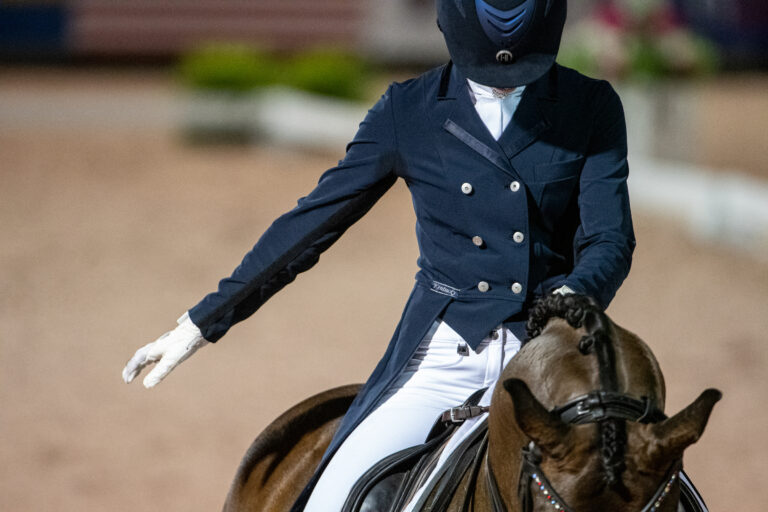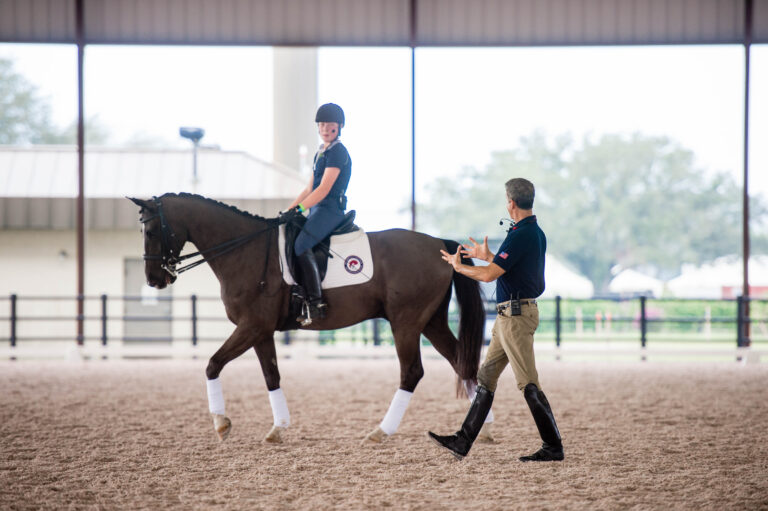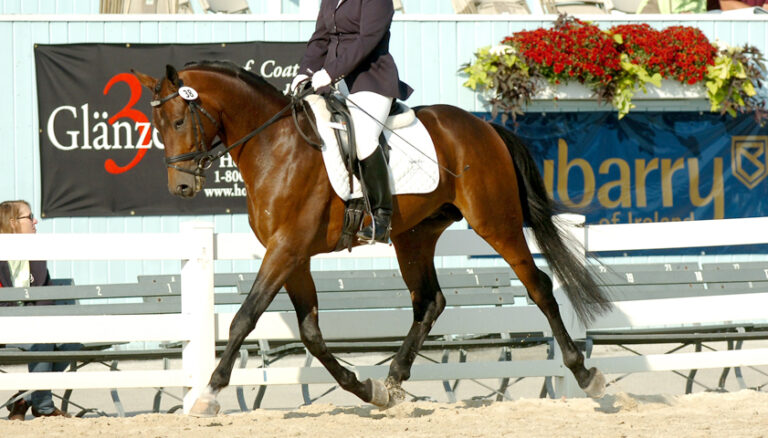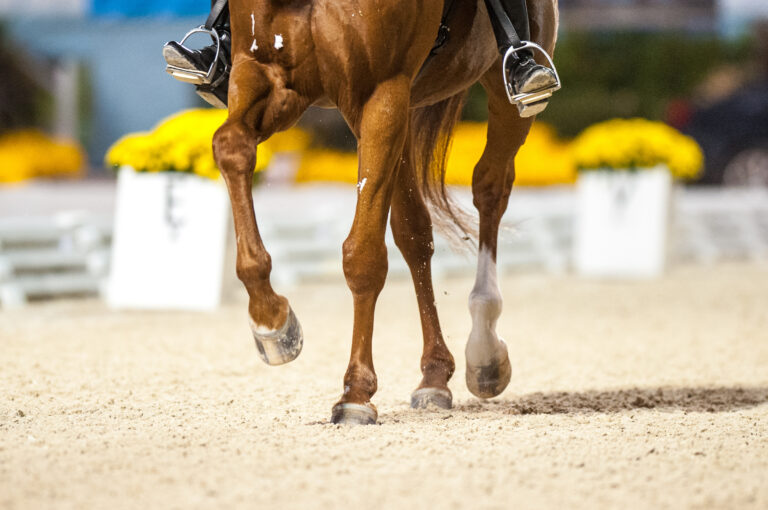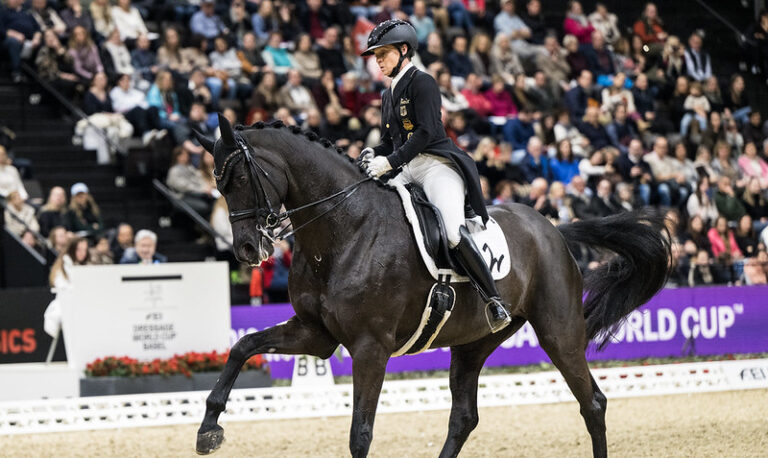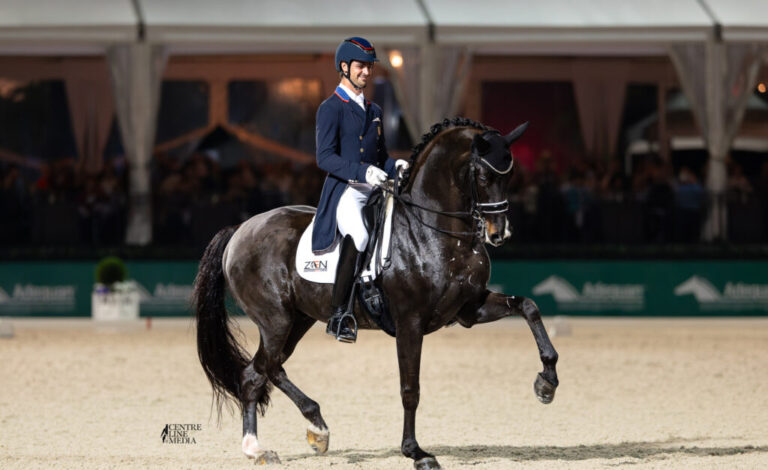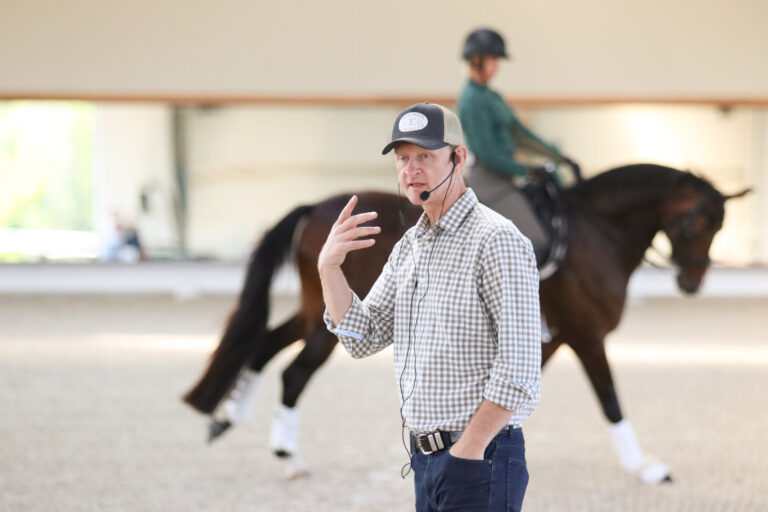Assuming your horse is going well in the snaffle bridle and is accepting the Second Level work easily, you can introduce the double bridle. Schedule a light day for riding when you first use it—a relaxed situation such as hacking out or an easy work day. Don’t try to teach him something new or fix a problem. I try to keep horses as comfortable as possible for this introduction.
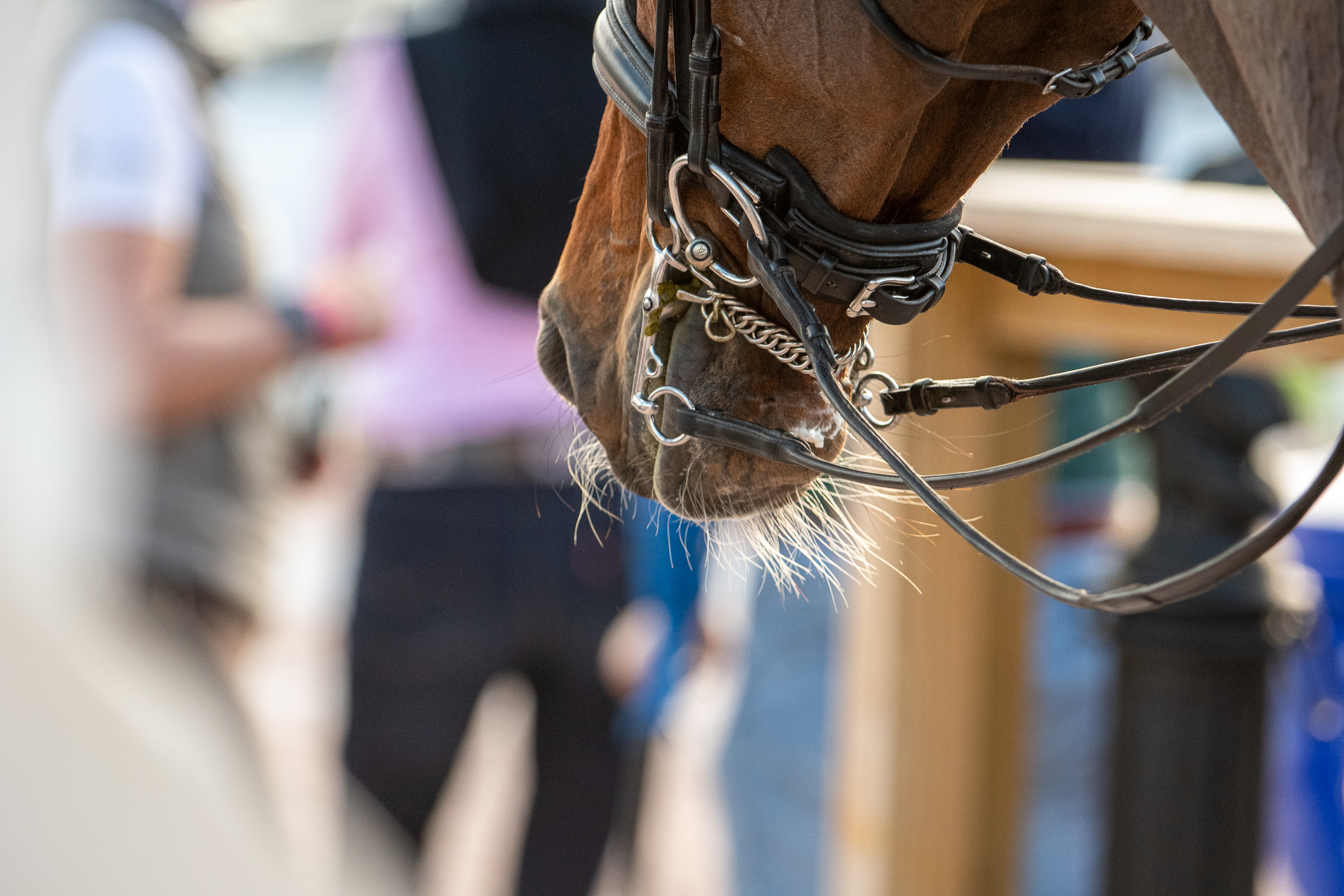
A double bridle has two bits. The bridoon is a snaffle, and the curb is an unjointed mouthpiece with a port—the portion that curves upward in the center of the mouthpiece under which the horse’s tongue fits. The bridoon works the same way your regular snaffle does and should fit much the same. A single-jointed bridoon has more of a “nut-cracker effect” than the double-jointed bridoon does. The bridoon needs to be as similar to your regular snaffle as possible. If your snaffle is a double-jointed loose ring, then use a bridoon similar to that. However, the bridoon should be thinner than your regular snaffle to leave room for the curb bit in the horse’s mouth. Often the bridoon will be a quarter to a half inch longer than your regular snaffle, so it does not pinch your horse’s lips. Sometimes the regular snaffle is used in place of the bridoon, but since the rings are larger than those of the bridoon, it does not look as comfortable and can take away from the picture of the double bridle fitting well.
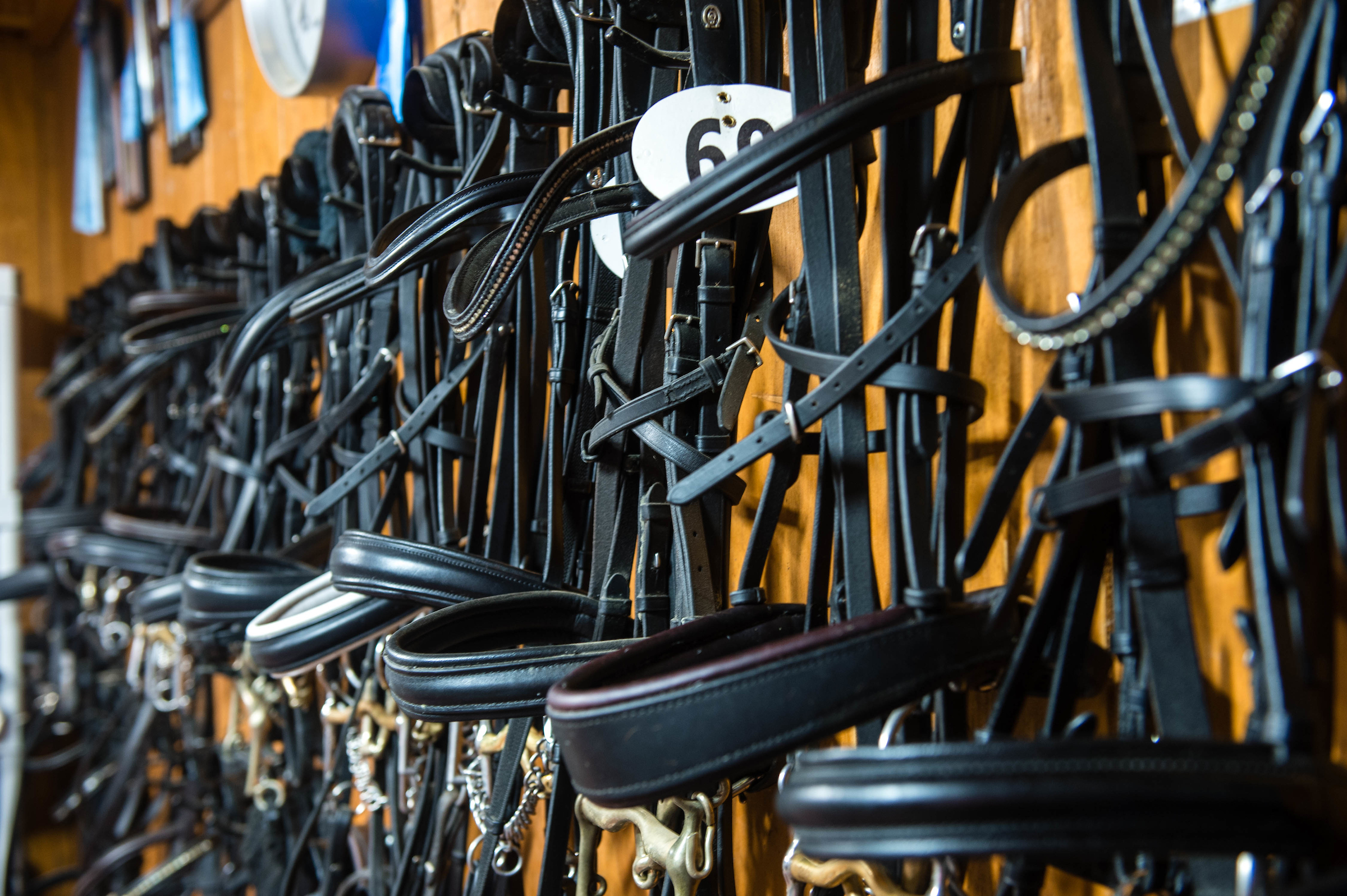
There are many options for curb bits. I have collected quite a few different bits over the years and have had the opportunity to try these on horses to find the best fit. Since bits are expensive, ask your horsey friends if they have any you could borrow to try out before buying. Some tack stores will even let you try a few different bits before you buy, which is great and something I recommend.
The curb is closer to the horse’s bars and has an effect on the horse’s poll and chin, depending on how long the shanks are—the longer the shanks, the more severe the bit.
I generally start with a low port, which is the least severe. The curve of the lower port allows more tongue room. A high port presses against the roof of the horse’s mouth.
The width of the curb bit is important as well. Usually it is the same width as your regular snaffle. Neither the bit nor the shanks should pinch the corners of your horse’s mouth or cheeks.
The length of the shank varies from bit to bit. Short shanks create very little pressure on the horse’s poll and chin, and the port does not act on the roof of the mouth as much. A bit with longer shanks has a harsher effect and should be used with care.
The curb chain lies flat with no twists, especially where it attaches to the hooks on either side of the curb bit. I suggest a medium-length shank and a thick curb chain with a rubber chain guard. This is a middle-of-the-road choice. You can get bits that are more or less severe, depending on how your horse reacts to them.
Adjust the bits as you would fit your regular snaffle bridle. The bridoon may look slightly higher in the mouth since there is so much hardware in there now, and he might have another wrinkle at the corner of his lips. Ideally, the bits should move comfortably in his mouth when you wiggle them, and he should chew on them gently. If he tries to pull the bits up in his mouth, they are probably too low.
The metal of the bits should be the same. They look better, and the horse will probably be more comfortable because they will have the same taste. Check your national rulebook for rules specifying that bits are made of the same material.
You’ll want to keep a light contact on both reins, but plan to use only the snaffle rein. I do not suggest riding with the curb rein totally loose because, if the curb rein is swinging, its weight can actually bump the bit. Ride like you would ordinarily ride with your snaffle and everything should go smoothly.
If your horse becomes too soft in your hand, the bits may be too sharp, discouraging him from taking contact. So you will have to think about trying something thicker. If he just clamps down on the bits, they may be too thick in his mouth or too tight on his cheeks, pinching them. Once again, adjust accordingly.
The purpose of using the double bridle on a horse should never be misconstrued. It is used to add to the extra fine feeling that comes from the connection you have in the contact. This will help you maintain collection and ease of balance. Before the double bridle will help you refine the connection, the horse should know how to go forward from his hind legs and accept the contact of the snaffle bit. The double bridle should not be used to obtain a connection you cannot achieve in the snaffle bridle or to only get the horse’s head down.
To start, I would only use the double bridle on occasion. When your horse seems comfortable, eventually use it for two days in a row to get him gradually used to the idea. I’ve had great success working horses mostly in the snaffle bridle and using the double only before a show. Certainly, I have come across horses that work well in the double bridle on a daily basis and are quite happy. There also are horses that go better in the snaffle bridle after being ridden in the double, and there are those that are worse in the snaffle after the double. Every horse can be different in this respect.
As with any problem with bitting, I would make sure your horse’s teeth are well looked after by an expert. Happy double-bridle riding!
This article first appeared in the August 2002 issue of Dressage Today.
Gina Smith of Brockville, Ontario, represented Canada at the 1996 Olympic Games with her Dutch Warmblood gelding, Faust. In 2000, she represented Canada at the World Cup Final, and she was on the gold medal team at the Pan-American Games in 1991. A 1988 Olympic bronze medalist, she was on the Canadian short list for 2002.


